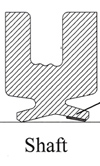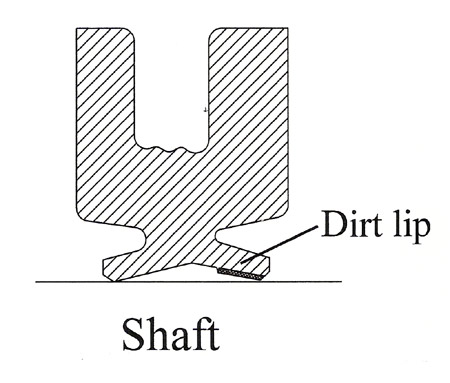Digging the dirt
 Although many might disagree, the sealing of the gap between two fixed surfaces is a relatively simple task. Variation in loading or changes in thermal expansion may require the joint to have some form of compliance, but in general the solutions are well understood and, as such, failures should be few and far between.
Although many might disagree, the sealing of the gap between two fixed surfaces is a relatively simple task. Variation in loading or changes in thermal expansion may require the joint to have some form of compliance, but in general the solutions are well understood and, as such, failures should be few and far between.
But when it comes to sealing the gap between a rotation crankshaft and the engine crankcase, a wholly different set of rules apply. In this case not only does the seal have to cope with variations in temperature, the shaft will also physically move up and down in the bearing, and in and out, and the seal will be required to maintain a constant contact against a moving surface for many hours. And but a single drop of oil constitutes a failure. No wonder then, for those in the know, that the most sensible thing to do with any competition engine is to use seals specifically designed for the task.
The vast majority of race engines are often modified versions of mass-production OE units. But while racers will use any number of specially designed high-performance head gaskets, for instance, they will almost certainly still insist on using the stock crank oil seal. This will have been designed by the OE manufacturer down to a cost, and will rarely have the same performance capability as one specifically designed for the much higher crankshaft speeds generally encountered in a competition unit.
At these much higher speeds the rear crank seal will often experience a great deal of distress when the friction present increases the temperature of the oil film at the lip. Degrading the oil, the abrasive carbon particles thus formed will therefore eventually grind a groove in the shaft. At times, and with a stock seal, this under-lip oil temperature may be as much as 60 C higher than that of the bulk oil. A specialised low-friction competition seal will help alleviate the problem -especially if you include a dirt lip in the design.
In designing a crankshaft seal, sometimes referred to as a dynamic seal, in addition to the space envelope available, the application and perhaps equally important the environment has to be taken into account. A transmission oil seal will be different from, say, a crankshaft seal, and the seal design at the front of the crankshaft could, as well as the difference in diameters, be different from that at the rear.

In particular, if an engine is to be run in a dirty environment an additional dirt lip will be considered essential. Designed to protect the main lip on the seal, the dirt seal is a second protuberance just in front of it and pointing downwards and outwards towards the shaft. Intended just to skim the surface of the shaft acting as a shield to the inner lip, the idea is to prevent the ingress of dirt but not actually add to the total friction. However, for those engines generating higher crankcase vacuums this dust lip can be encouraged to constitute the main vacuum-retaining lip, pulling the edge tighter onto the shaft.
If this is a simple rubber or NBR (nitrile butyl rubber) elastomer then the temperature created will burn the seal away. But in using low-friction PTFE-coated technology such as that used on specialised competition seals, as the vacuum increases the friction doesn't increase at the same rate, pulling more power at less friction.
A dirt seal may at first glance appear to be another unnecessary source of friction but, designed carefully, the crankcase vacuum can be increased to the point where significant increases in performance can be achieved.
Fig. 1 - Cross-section of a competition oil seal
Written by John Coxon